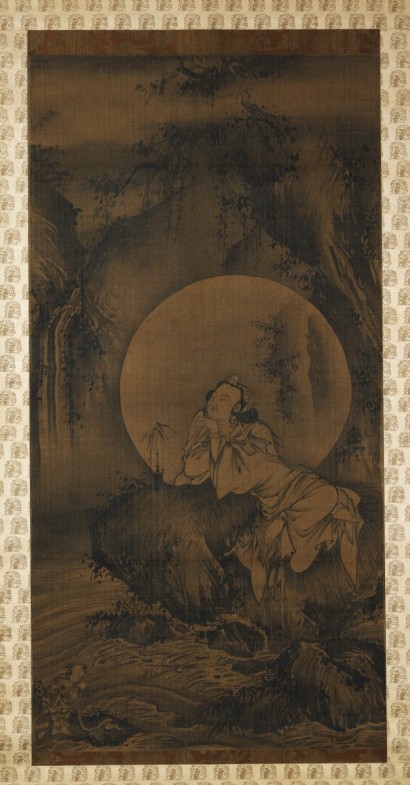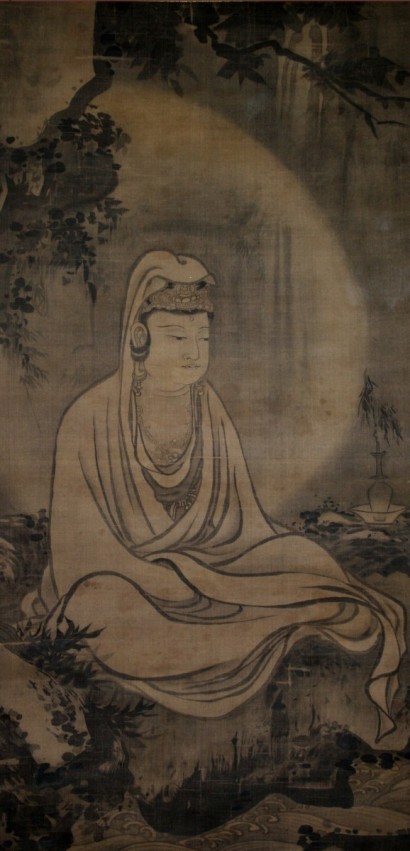Japan, Muromachi period, late 14th century; hanging scroll, ink on silk; image: 37 15/16 x 19 3/8 in., mount: 73 1/4 x 23 15/16 in.; Princeton University Art Museum, Gift of Duane Wilder, Class of 1951, y1992-6, photo: Bruce M. White, Courtesy of Princeton University Art Museum/Art Resource, NY.
Guanyin in White Robe
Japan, early Ming copy after Muqi Fachang (active mid–13th century); ink on silk; Nantoyoso Collection, Japan, photo: Wikimedia Commons.
This painting replicates a famous early depiction of White-robed Guanyin by the Chinese Chan monk/artist Muqi Fachang (active mid-13th century). The original has been housed for centuries in Kyoto. Based on such models, Japanese artists of the Zen school rendered Kannon in monochrome ink and often replicated the iconographic features seen here: seated bodhisattva in landscape setting with waterfall, encircled by a glowing nimbus, willow sprig in a vase. This visual tradition inspired the Japanese artist who produced the work on the left.





